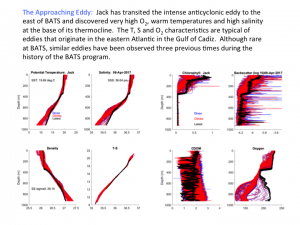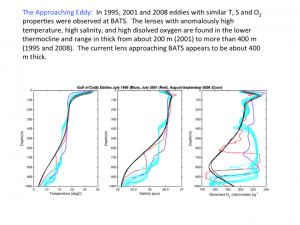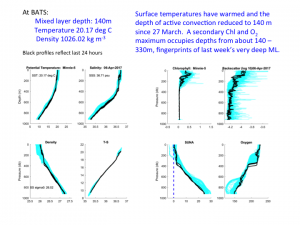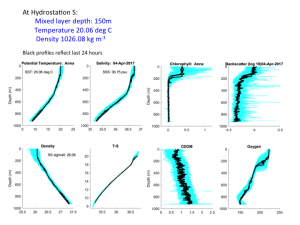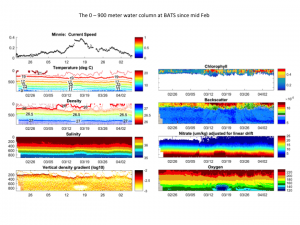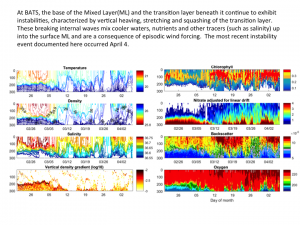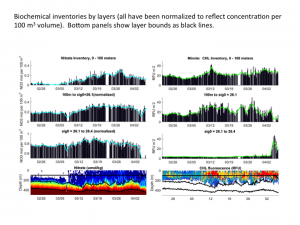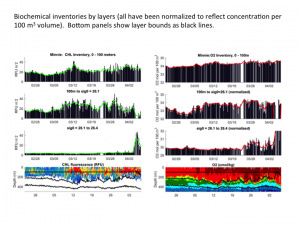An anticyclonic eddy is approaching BATS from the east that contains water properties characteristic of the Gulf of Cadiz. Jack has explored the eddy properties in the last week and discovered unusually high temperatures, salinities and dissolved oxygen concentrations in the lower parts of the thermocline. In the last several weeks, O2 concentrations at about 900 m have varied dramatically from low values of about 120 mmoles kg-1 to high values of 220 mmoles kg-1. Zantop and Leaman (1982) first identified this type of eddy in the subtropical gyre of the North Atlantic and traced is characteristics to water properties resulting from winter convection in the Gulf of Cadiz. The BATS time series data contain three other instances of this type of eddy records at BATS: 1995, 2001 and 2008.
Anna and Minnie remain in place profiling at Hydrostation S and BATS, respectively. Convective mixing appears to have reduced from about 300 m to about 140 m at BATS as SSTs have warmed a bit. Elevated nitrate in the surface waters continues to result in higher Chl and particle concentrations, as well as elevated dissolved O2. Mixing in the transition layer continues to be the primary source of NO3 movement toward the photic zone and the most recent upwelling documented on or about April 4.
- The eddy field near BATS
- Profiles from Jack as it crosses the anticyclonic eddy east of BATS
- Profiles from previous Gulf of Cadiz eddies at BATS (1995, 2001, 2008)
- Current conditions at BATS
- Current conditions at Hydrostation S
- Time series of the water column at BATS (0-900 m)
- Time series of the water column at BATS (0-300 m)
- Nitrate and chlorophyll inventories at BATS
- Chlorophyll and dissolved oxygen inventories at BATS



